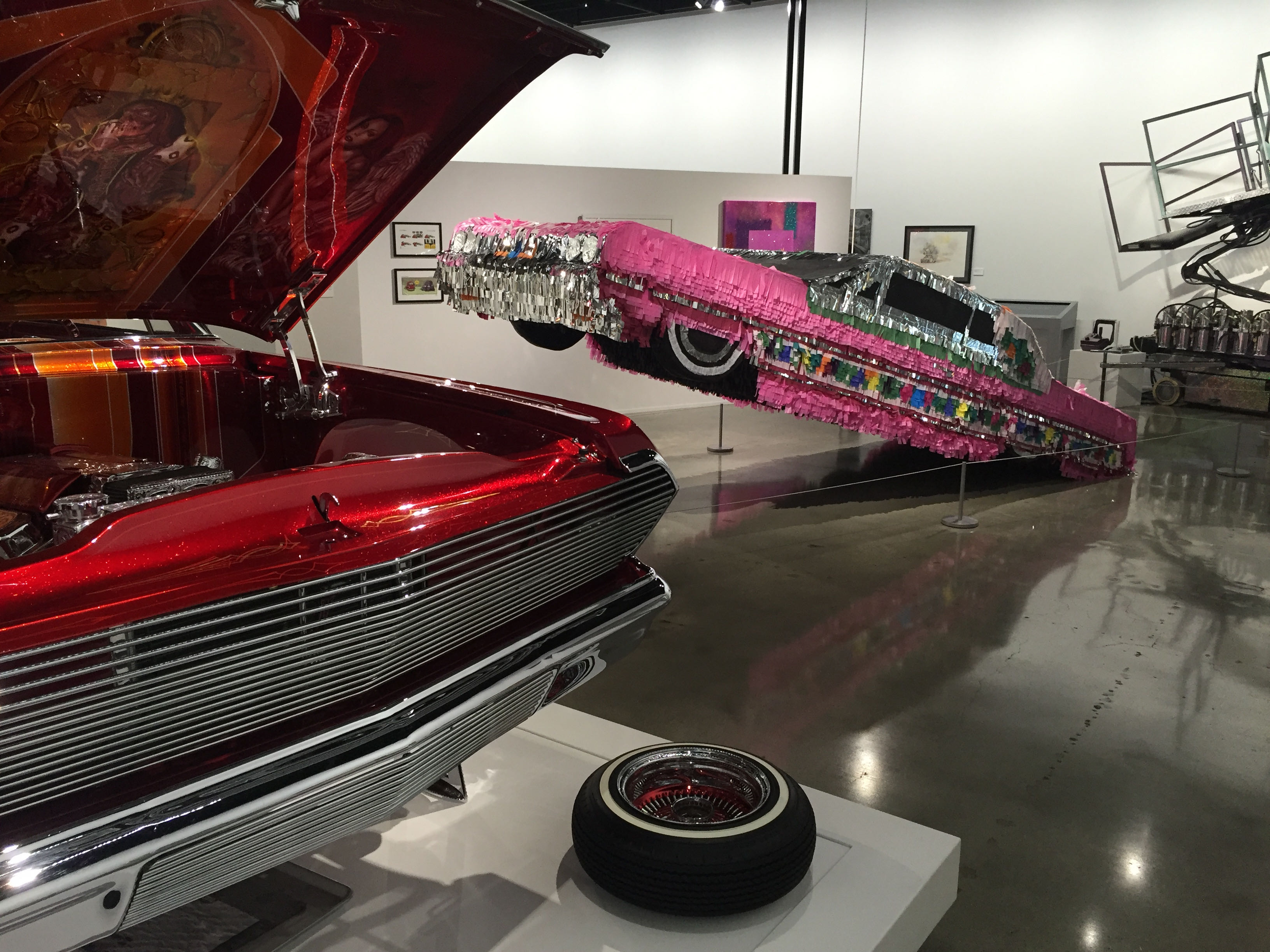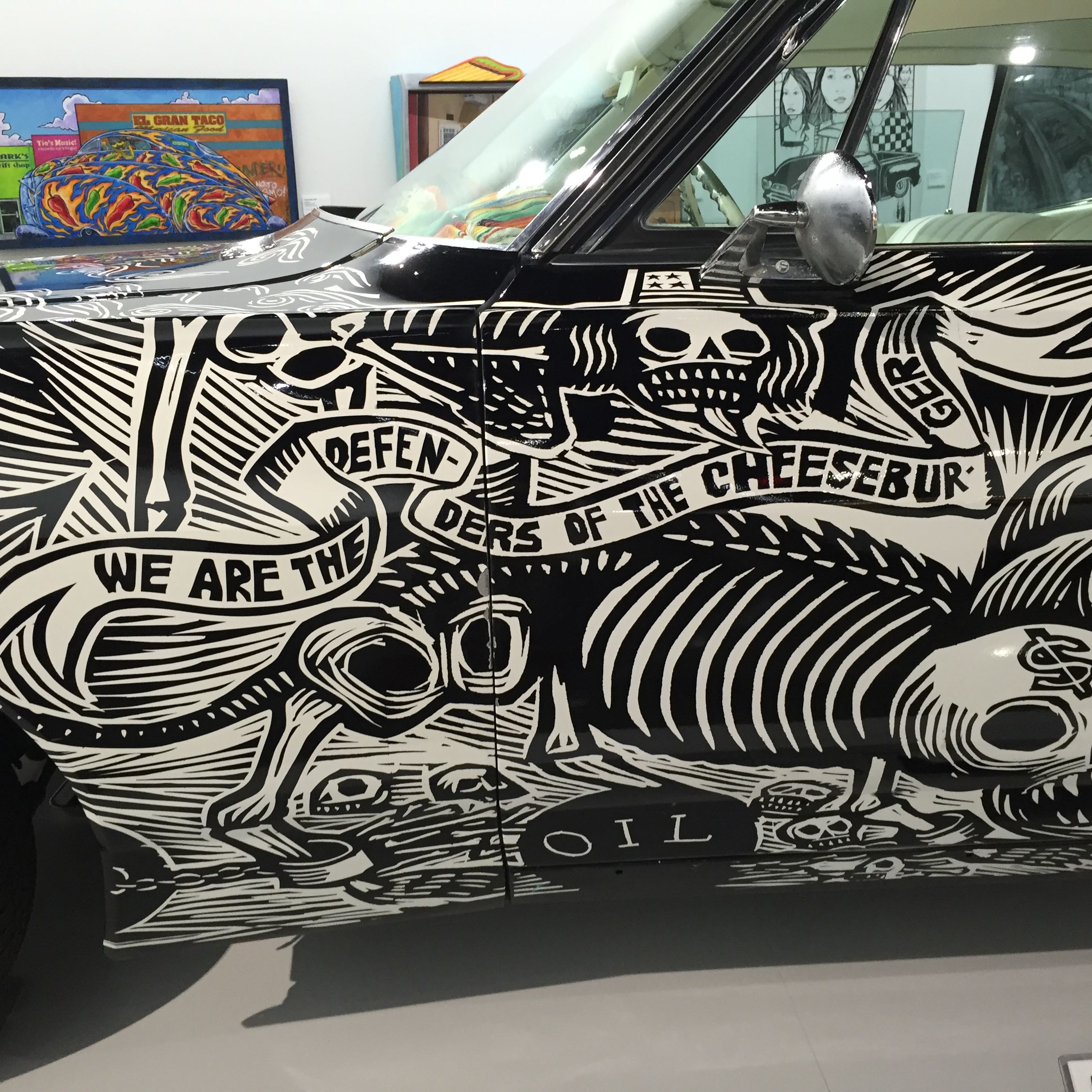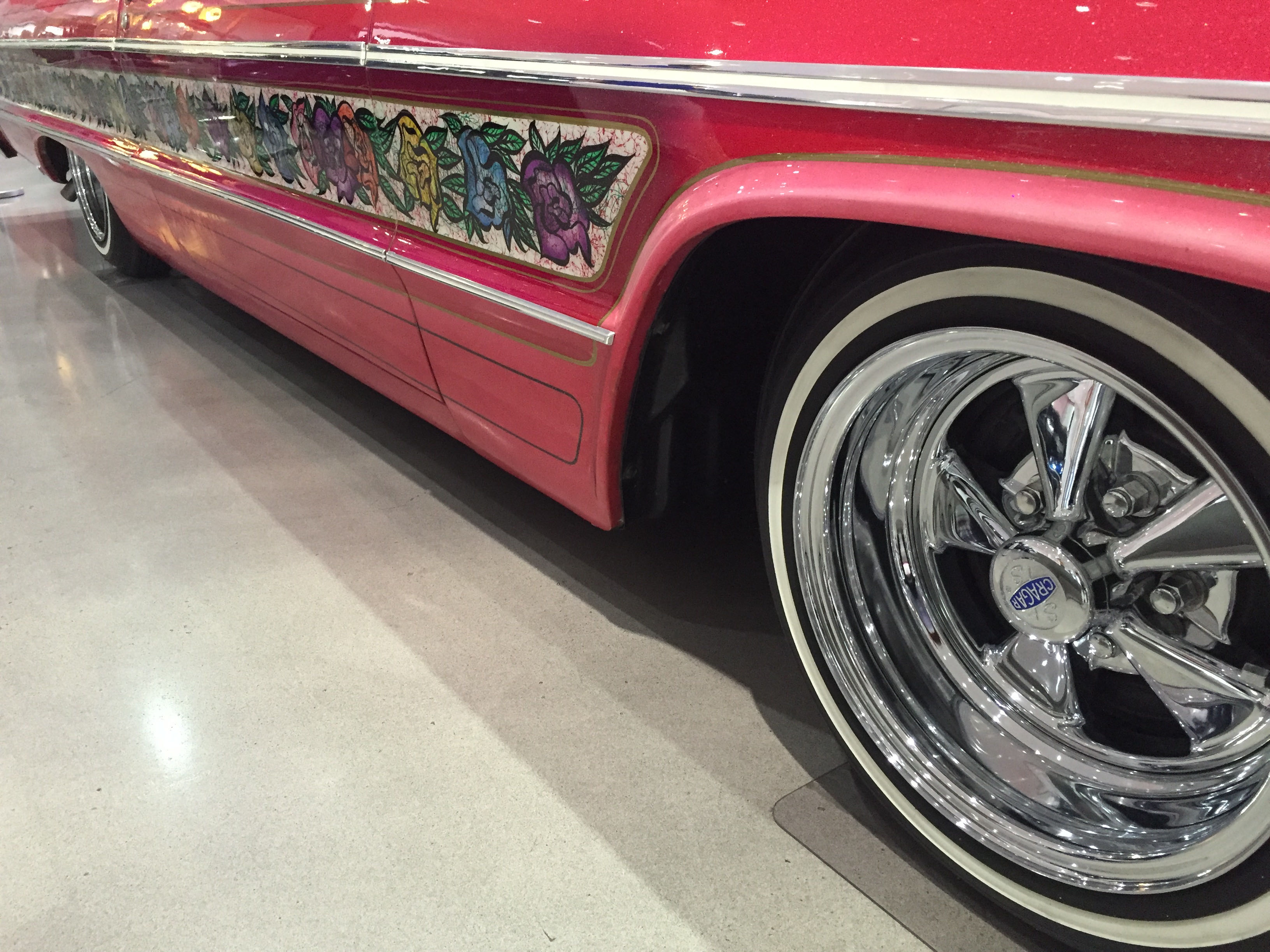
Without irony, the art and artisans of the lowrider culture occupy the Petersen Automotive Museum’s gallery named for Armand Hammer, a collector of fine art representing some of the most controversial creative anarchy in the history of art — beginning with the creative anarchists of Florence who reintroduced lifelike humanism in the late 15th century after a millennium of Byzantine cartoons of lifeless icons. We call it The Rebirth (Renaissance).
Hammer’s collection even includes the work of a group of curious primitives who took their brushes and paints outside and made sketches of life in real time and offended the Salon de Paris — we call them the en plein air Impressionists.
There also are Cubist, Fauvist and not the least of which century-old Dada among a catalog of modern art history that Hammer seems to have recognized as courageous. We now describe all those as Modernists.
Now we celebrate a Renaissance of Modernism with a Latin accent. There is impressionism and dada, among the intellectual nomenclature that connects to automobiles and the dynamic science of hydraulic highs and lows, as well as a gallery of finely crafted images — with the heat of political controversy.

Larry Gonzalez, Mario “Sonny” Madrid, and David Nunez sought to present a voice for the Chicano community in the San Francisco Bay Area. “Sonny” Madrid took a sharp focus and gave the “low and slow” culture a voice — a thoughtful, articulate and often controversial voice. The first issue of Lowrider magazine debuted in January 1977. In that same window of time and culture, Charley Trujillo founded Chusama House to publish thoughtful volumes of ethnic studies and knew Sonny when his periodical was launched.
“It wasn’t just about cars,” he remembers. “It was more like a literary thing at the beginning.”
Joe Rodriguez, a Harvard Nieman Fellow and legendary voice of the voiceless at the (once: San Jose…) now Mercury News, wrote an eloquent obituary for Sonny in 2015 — and included the cultural pride he fiercely defended. The lowrider was the icon of the barrio life and it was infused with the history of la raza. Faces are recognized Aztec and what could be misconstrued as engravings of tattoo art are more closely related the hand-tooled, silver-crusted charro saddles that lead parades all over America — the Americas.
Tomás Ybarra Frausto, a fellow of the National Association for Chicana and Chicano Studies and the associate director of the Creativity and Cultures at the Rockefeller Foundation, described the iconography of the barrio as, “a sense of self-worth that is defiant, proud and rooted in resistance.”
And it exhibits stunning examples of craftsmanship and a devotion to its finest interpretations. “El Rey” is both a complete gallery of fine decorative sculpture and engraving, and a “canvas” of classically accomplished figurative painting — but it is also an example of the technical wizardry of riding low. This one lowrider delivers the very finest representation of every element of “The High Art of Riding Low, Ranflas (lowrider car), Corazón (pride) e Inspiracion.”

“Gypsy Rose” was created by Jesse Valades — three times.
The first was an original ’63 Chevrolet Impala painted pink as namesake and burlesque legend Gypsy Rose Lee might have enjoyed. Unexpected things happen on the east side of Los Angeles and one of them was the disappearance of “Gypsy Rose.” Planning for its reincarnation was underway immediately.
Joe Ray, veteran editor of Lowrider magazine remembers Jesse wanting to give the second edition more of a theme. Roses. He even asked his mother what she thought of the idea; approval was easy. Jesse was a member of the Imperials. The finished lowrider was driven to an Imperials Car Club party in El Monte without the approval of the local gang. The offended group arrived in force and destroyed Gypsy Rose II as she sat in the street in front of the party. Point taken!
Her third incarnation began with a ’64 Impala and the fantastic result inspired Car and Driver magazine to make it its first lowrider feature story in 1972. Then came television and movies and it opens the Petersen Museum’s tribute to the Chicano Movement and its creative culture as “The world’s most famous lowrider.”
“El Muertorider” is an art installation that employs evocative images of Dia de los Muertos (“Day of the Dead”). They were created in the style of mono-chrome woodblock prints by Artenio Rodreguez, a co-creator of the 1968 Chevrolet installation and José Guadalupe Posada’s broadsides that inspired Diego Rivera.
The paintings and sculptures of 50 artists enrich the exhibit in a host of media. One stands out — and up — and down. “The Piñata,” an iconic paper sculpture tribute to Gypsy Rose.
The walls of the Armand Hammer Foundation Gallery continue the celebration of the latina/o creative story. Each work of art is a story and many carry on the tradition of “art as defiance” that has driven painters into new forms of expression for centuries.
It’s too bad Larry and Sonny and David couldn’t be here to see this: Lowriding is more like a family thing in its international renaissance.
With our bedazzled thanks to Denise M. Sandoval, guest curator.
Photos by Larry Crane




